The most important project of the Yokote Masuda Manga Museum is the archiving of original manga drawings. Its efforts are attracting attention as an operational model for manga-related facilities nationwide. What are the obstacles that the museum has overcome in the process of archiving, and what challenges have emerged? Continuing from Part 1, we interviewed OISHI Takashi, the museum’s director.
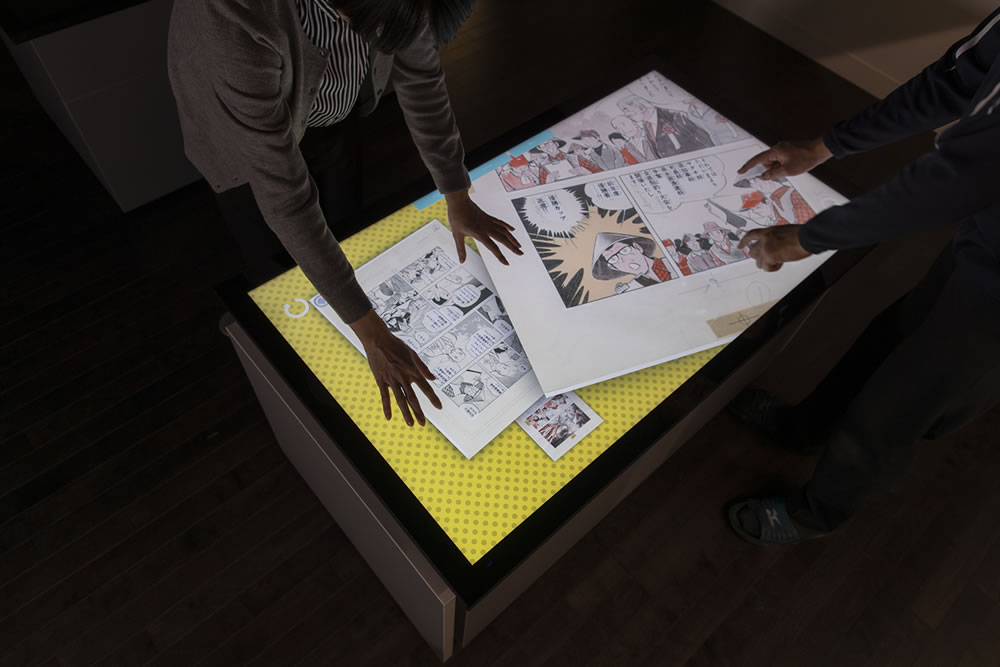
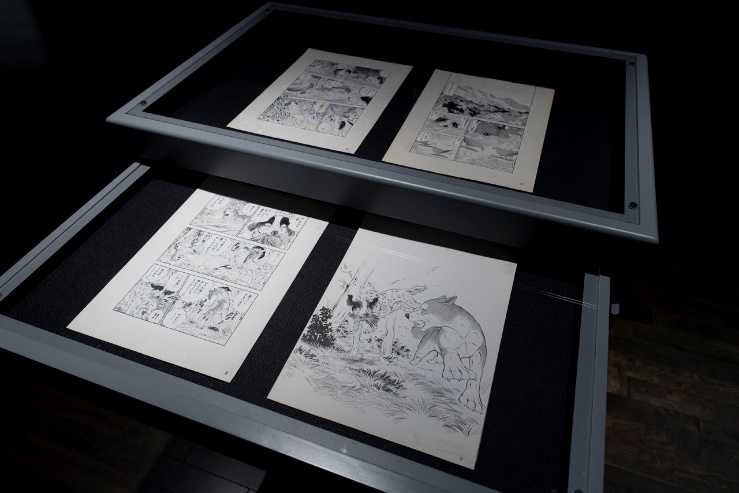 A display touch panel. Visitors are able to view, on a monitor, original drawings by manga artists from a large collection. They can also zoom in. The available content for viewing is changed periodically, due to the large number of works by each artist.
A display touch panel. Visitors are able to view, on a monitor, original drawings by manga artists from a large collection. They can also zoom in. The available content for viewing is changed periodically, due to the large number of works by each artist.
*The use of touch panels is currently restricted to prevent the spread of the new coronavirus.
Conservation and utilization are two wheels
In the Part 1 article, we explained a dilemma surrounding the positioning of the value of the original artworks, as well as the method of organizing and storing them.
Given the costs of archiving the original drawings, it is necessary at the same time to consider the utilization of the works in order to expand and continue the project. In fact, museum director OISHI Takashi emphasizes that, “Conservation and utilization are two wheels. If we focus on one or the other, we will not be successful.” It is necessary to think of the original drawing archive as a project that integrates everything from collection to utilization.
However, even if we talk about how manga used, it is necessary to be cautious because manga artists and publishers hold their own rights to their works. In this respect, the museum has come up with a method of utilization based on two guiding principles: “localism” and “return to the citizens.” This is an idea that can be linked to the concept of “protecting the original works of local artists in each region,” which I will discuss later.
An example of returning the value of the acquired original drawings to the citizens is the free access to exhibitions of the original drawings (*1). In addition, the museum has agreed to allow the use of the images within the scope of Yokote City’s nonprofit town development and image-enhancement activities, such as the wrapping of official vehicles and production of public posters. Not only do the activities leverage familiarity in a way that only manga can do, but they also help to foster civic pride by informing the public about what kind of works are being preserved at the museum.
Copyright and original drawings
Regarding the use of the original drawings for the city’s PR purposes as described above, neither the city nor the museum pays royalties to the manga artists or publishers. The arrangement is operated with permission and in line with the cost of storing and managing the drawings.
The rights of the original drawings are briefly summarized as follows: First of all, manga artists are the owners of their original works as objects. However, depending on the contract between a manga artist and a publisher, the publisher who placed the order will have the publishing rights (*2), which is one of the copyrights. Furthermore, both the manga artist and the publisher are holders of the rights to the work and its characters. Therefore, even if there is no problem in transferring or trusting the original work at the discretion of the manga artist, it is difficult to utilize the work without the publisher.
Since the museum’s collection is expected to be used in advance, publishers are invited to participate from the negotiation stage with manga artists. This is the first stage of the archiving process, and it requires the most energy.
OISHI says, “It is very difficult for individual manga artists to manage their original works for long periods of time while paying attention to their conservation condition. In some cases, it is so difficult that the original works end up being destroyed. There is also an element of uncertainty about whether a bereaved family would be able to cope with the situation of the manga artist passing away suddenly, and there would be little negative reaction to the idea of doing a good job protecting a collection of original drawings in a facility, such as a museum. However, everyone is nervous about an institution starting to assert some kind of rights just because it possesses the originals. We carefully explain at the beginning what we will and will not do, within the framework of giving back to the public.”
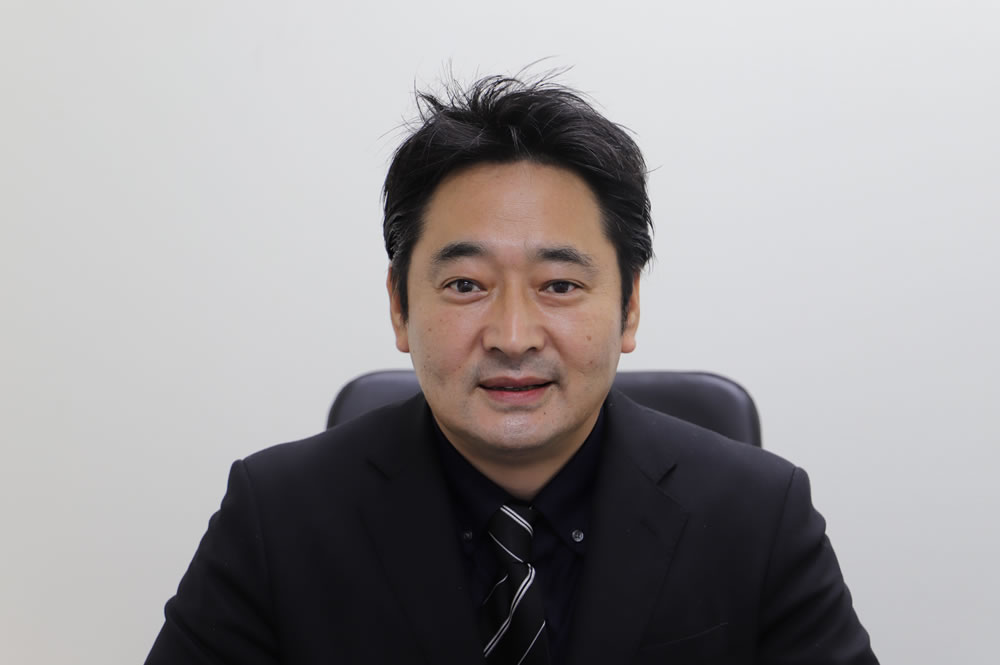 OISHI Takashi, director of Yokote Masuda Manga Museum
OISHI Takashi, director of Yokote Masuda Manga Museum
Developing manga education
Another noteworthy initiative utilizing the original drawing archive is manga education, or the introduction of manga into the field of education (*3). With the “Yokote shi mirai no mangaka hakkutsu magazine seisaku project (Yokote City future manga artist discovery magazine production project),” manga manuscripts are solicited from elementary and junior high school students in the city, collected as art works, and published in a manga magazine. The first issue was published in the spring of 2020. It was placed in public facilities, hospitals, and dentists’ waiting rooms in the city for the public to see. Moreover, the original drawings that became the book were archived through working by the children themselves and stored at the museum. All of these projects are designed to provide elementary and junior high school students with an opportunity to think not only about the publication process but also about the significance of archiving the original drawings, taking advantage of the museum’s unique archiving capabilities. Nevertheless, it took a lot of effort to get the city and its board of education involved in these projects.
“Even within the city council and city hall, there was a negative reaction to the idea of spending public money on manga. No matter how passionate we are about the necessity of archiving, it is difficult to get the message across. This is because for the government, it is imperative to tackle many primary projects, such as those involving welfare and education. It’s very tough to spend money on culture without doing anything in those areas. Facing this headwind, I have been saying that while welfare, education, and medical care are diet staples, the side dishes of culture also contain essential nutrients necessary for growth. But we can’t make this side dish in our own fields. We can create a well-balanced diet only by taking in nutrients from the outside with the help of many manga artists and publishers. I told them that this would lead to the healthy growth of the city of Yokote. Then, finally, some people started to say that they understand,” OISHI said.
Not only for the city of Yokote, but also for government, manga culture may be too distant from traditional work duties for its value to be seen. On the other hand, manga culture is an everyday entertainment for citizens, and we can imagine that it is difficult to see the value of government intervention in it. However, what would you think if you saw a manga magazine created by children and students in the waiting room of a hospital, for example? Or what if one’s own child or grandchild’s work appeared in the magazine? It seems to me that the distance between us and manga culture will change from such small steps.
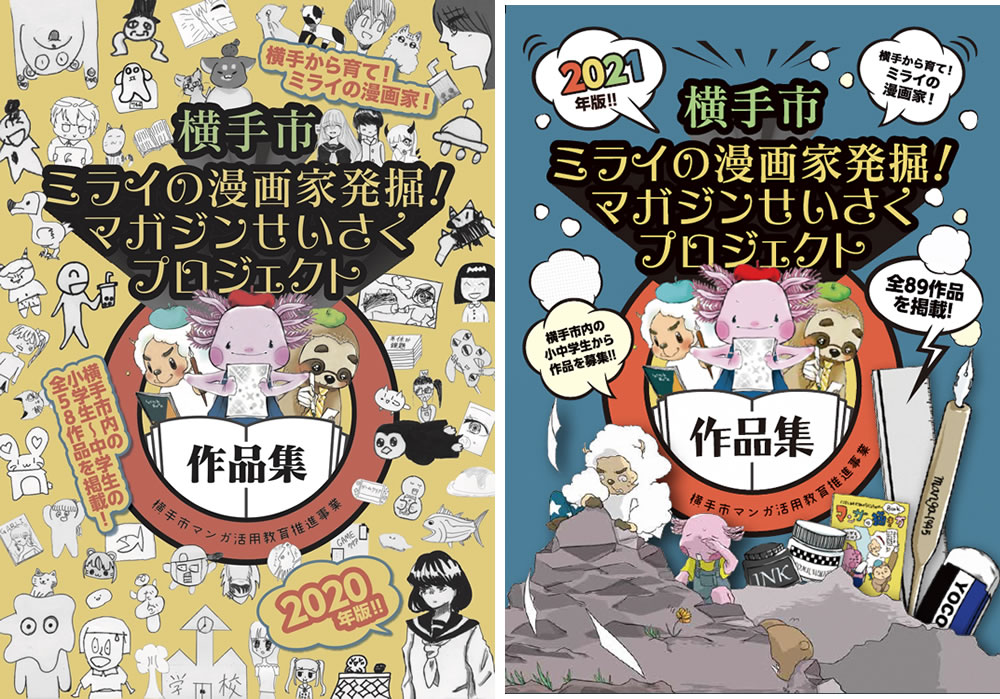 The 2020 edition (left) cover of Yokote shi mirai no mangaka hakkutsu magazine seisaku project sakuhinshu (Collection of works from Yokote City future manga artist discovery magazine production project) has 242 pages, and the 2021 edition (right) has 448 pages.
The 2020 edition (left) cover of Yokote shi mirai no mangaka hakkutsu magazine seisaku project sakuhinshu (Collection of works from Yokote City future manga artist discovery magazine production project) has 242 pages, and the 2021 edition (right) has 448 pages.
Networking beyond the archive
Conservation and utilization are the archive’s two wheels. Even so, there will be a limit to the capacity this vehicle can carry.
As of 2021, the museum had a collection of more than 420,000 original drawings from 182 artists in Japan and abroad. But due to the facility’s space limitations, there is a physical limit of 300,000 open shelves and 400,000 closed shelves, for a total of 700,000 artworks. Naturally, it is not possible for the museum alone to protect all the original drawings (*4) of the manga created to date.
In terms of the time required for digitization, it takes about 10 to 15 minutes to scan an original at 1,200 dpi. If we consider that the maximum number of scans per day is about 50, it becomes clear that the time required for preservation will diverge from the number of originals in the collection as the collection grows.
In order to solve these problems, a “network building” project has begun to take shape. Several manga institutions work together to preserve their works (*5). Their three major roles expected for this project are:
(1) Establishing an original image consultation service
(2) Networking with cooperating facilities across the country
(3) Cultivating specialized personnel
The idea is that by fulfilling these requirements, museums, art galleries, and manga museums in various regions will be able to work together as part of a network to protect the original artworks in response to requests for conservation from manga artists, their bereaved families, publishers, and editors.
As for establishing a contact point in (1) above, implementation was realized in July 2020, and a dedicated website has already been launched. This is the first public consultation service for the preservation of original artworks, and it is expected to consolidate and centralize information.
The next step is to create a place to preserve the original drawings. For this purpose, the project is calling on cooperating facilities and building a network to link them.
“As the value of original drawings is being re-evaluated, the number of facilities that collect originals may continue to increase throughout Japan. However, instead of each institution competing with each other to increase the number of original works in their respective collections, I would like to link this to a movement in which everyone works together to protect the overwhelming volume of original works that are right in front of us. The easiest way to think about this is to have a museum in the manga artist’s hometown and make the original drawings a local treasure,” OISHI said. In the same way that the core of the Yokote Masuda Manga Museum is its collection of original drawings by YAGUCHI Takao, who was born in Akita, each region will take on collecting original drawings by local manga artists, from acquisition to archiving, and then to civic pride through utilization. How can we not follow outstanding cycle as a model?
“We hope the example set by the Yokote Masuda Manga Museum can be used as a yardstick for other municipalities (*6). This is not to say that they should follow this approach. I’m only offering it as an example, and even if there were a case where only the originals were stored and collected in a box without using acid-free paper, I would be willing to allow that approach as well. I want to increase the number of our friends with a mindset of never blaming or denying.”
We have too little time, given the huge number of original drawings. OISHI has such a sense of crisis. To begin with, archiving original works is still in its infancy. It will take some time to build the network. And beyond that, the archiving process will take an endless amount of time.
Although archiving is for works created in the past, its driving force is the power of imagination for the future. For example, the kind of past works that readers will be able to access 50 years from now depends on the results of the archiving work being done now.
This not only provides an opportunity to read, but is also for the next generation of creators. On the eve of the establishment of the Masuda Manga Museum in 1995, there was an idea of a “YAGUCHI Takao Memorial Museum” that would collect only the works of YAGUCHI, being a local manga artist. However, he turned down the idea and said he wanted to create a place where he could see the real and original works of the best manga artists in Japan and abroad in order to cultivate the next generation of manga artists.
“Anyone who comes into contact with the real thing will understand how amazing it is... For a manga artist, it’s as important as if he or she had poured their heart and soul into it and did it at the risk of losing their lives to draw them... I believe (that the Manga Museum will make) a great contribution as a center for the dissemination of manga culture.” (*7)
From a manuscript drawn with a pen on paper, we can feel the materiality of the ink that gives a sense of fresh brushstrokes, and the handiwork of the manga artist in traces of correction fluid. They are the best living textbooks filled with the enthusiasm of creation. It is YAGUCHI’s thoughts that continue to illuminate the museum’s future.
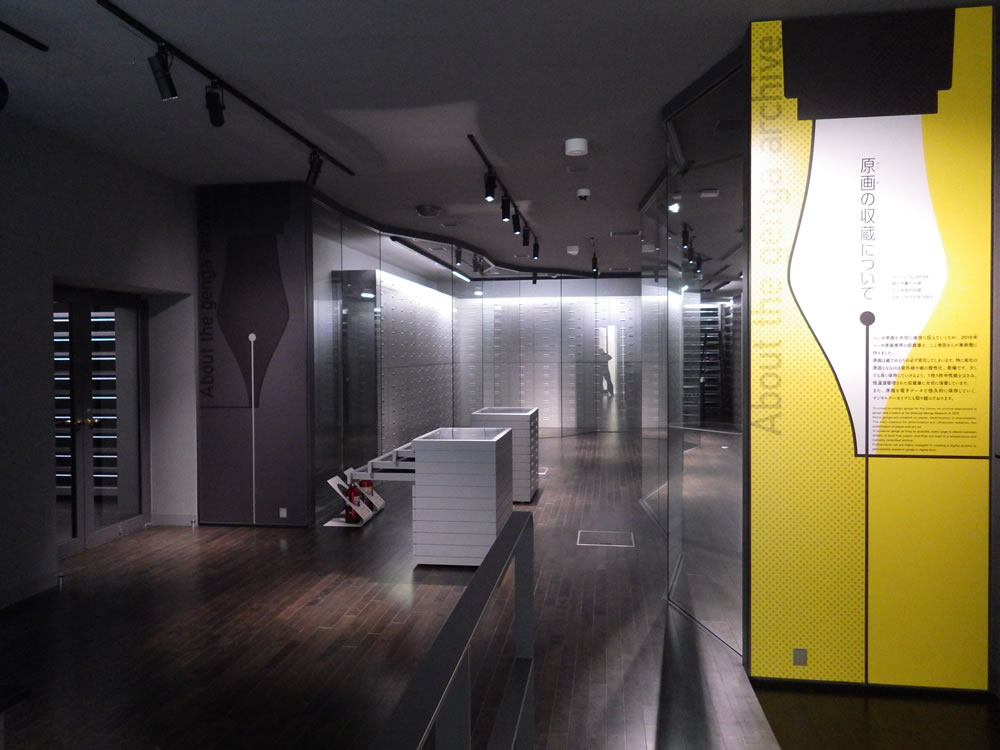 “Manga no Kura” (Manga warehouse)
“Manga no Kura” (Manga warehouse)
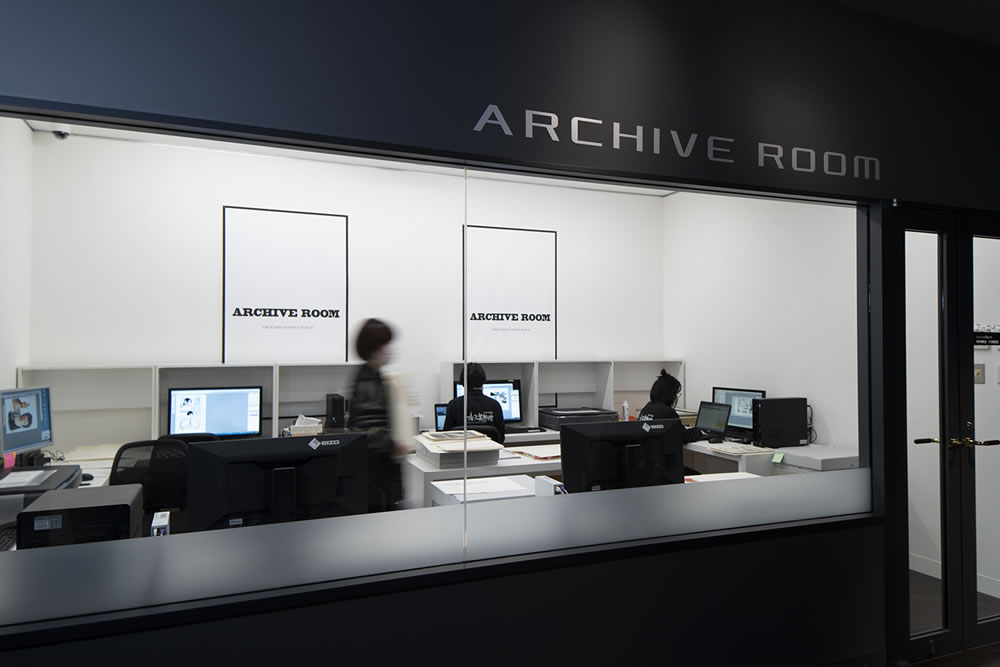 Archive Room
Archive Room
(notes)
*1
The permanent exhibition is free (Fees required for special exhibitions), regardless of whether you are a local resident or not. Annual passports are also available, starting at 800 yen for elementary school students.
*2
Although the term “copyright” is generally used to encompass the entire licensing business, it is not explicitly stated in the Copyright Act, and publishers often establish and contract with each other individually. As for the Prints Right, Article 79 of the Copyright Act states, “a print right to either print the work as a piece of writing or as a picture or to transmit the work to the public using a copy of that work that has been recorded on a recording medium in the relevant format” and Article 80 states that, “the owner of print right...holds the right to reproduce the unaltered original work for the purpose of distribution, as a piece of writing or as a picture, by printing it or by other mechanical or chemical means.” It can be imagined as an entity that has both the right of reproduction (Article 21) and the right of public transmission (Article 23). The print right’s term is generally three to five years, or three years if not specified.
*3
Yokote City’s “Manga katsuyo koso (Manga utilization concept)” also advocates for “distinctive education” using manga.
https://www.city.yokote.lg.jp/shisei/1001179/1001469/1003326.html (in Japanese)
*4
The “Manga genga archive manual (Manga original drawing archive manual),” mentioned in Part 1 of this article, estimates the total number of analog manuscripts at more than 50 million. The following estimates are based on a research report, “Report on the production process and utilization of the Media Arts Database (Development Version),” from the 2016 Annual Meeting of the Japan Society for the Studies in Cartoons and Comics.
“The total number of manga magazines (including satirical cartoons from the Meiji Era) that have been published in Japan is 5,500 (counting magazine titles) and with the total number of all issues published by each magazine at 145,000. Set the number of pages in each magazine to 400 to attempt, 145,000 books x 400 pages = 58 million.”
*5
A report on the symposium “Manga first? Original drawing first? —Toward the next stage of ‘manga archives’” (https://mediag.bunka.go.jp/article/article-16346/ (in Japanese))is posted for the construction of a collaborative archive of historical materials on manga. Information will be updated in the archives of the Media Arts Current Contents.
*6
The museum aims to share not only archiving methodology, but also the ways of viewing original drawings. A special exhibition, “genga no mikata (how to view original drawings),” held at the museum in 2019, introduces key points and innovations in viewing original artworks from the collection. The museum is working on a plan to package this exhibition and propose it as a traveling exhibition to cultural facilities nationwide.
*7
Manga Banzai—gagyo 50 nen eno kiseki (Manga Banzai: 50 years of drawing), (Akita Sakigake Shimpo, 2020), 114, 115.
(information)
Yokote Masuda Manga Museum
Address: 285 Masuda Aza Shinmachi, Masuda-machi, Yokote, Akita
Open Hours: 10:00–18:00
Closed: Third Tuesday of the month (If it is a national holiday, then the following day.)
Admission: Free for permanent exhibitions (Fees required for special exhibitions:
http://manga-museum.com
Manga Genga Archive Center (c/o the Yokote Masuda Manga Museum)
TEL: 0182-23-6915
FAX: 0182-23-6916
email: info@manga-genga-ac.jp
http://www.manga-genga-ac.jp
*URL links were confirmed on June 16, 2021.











